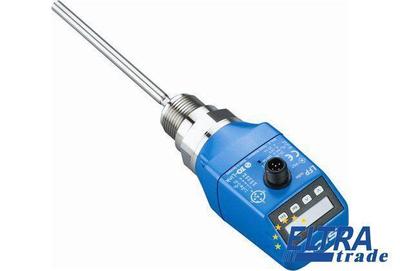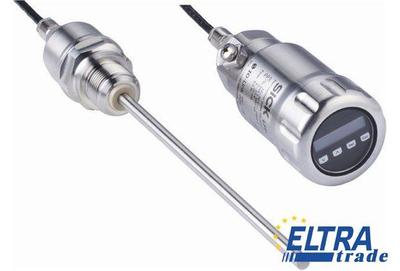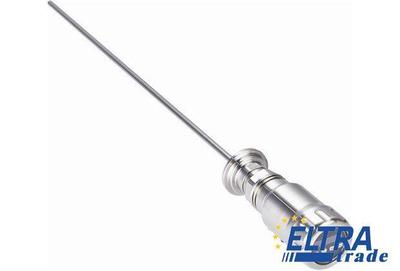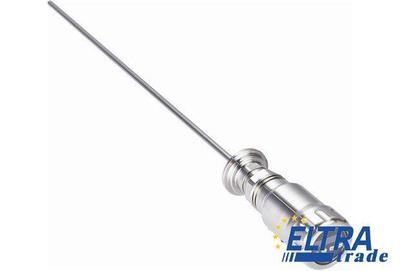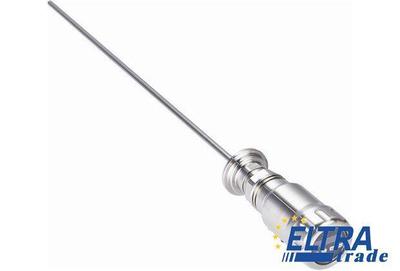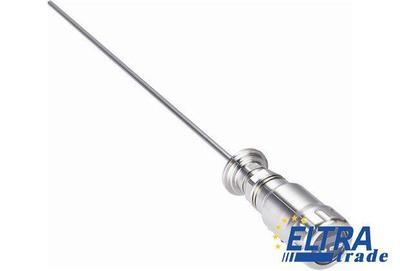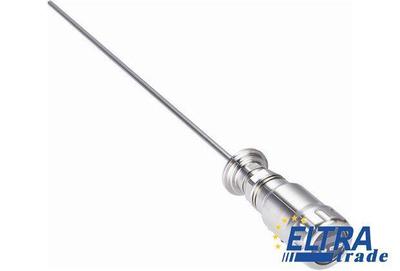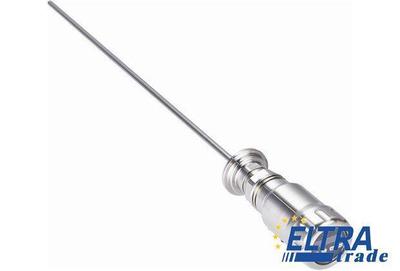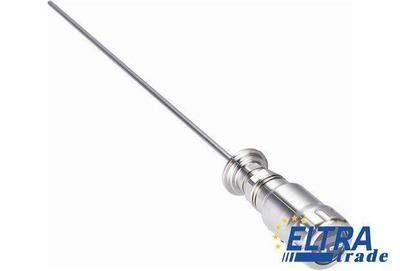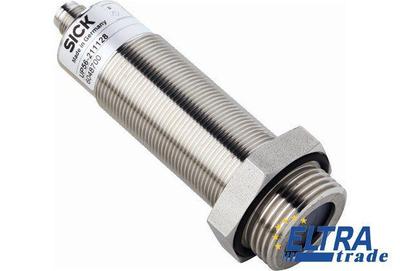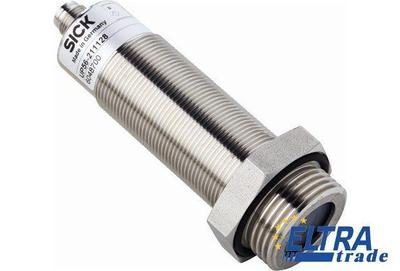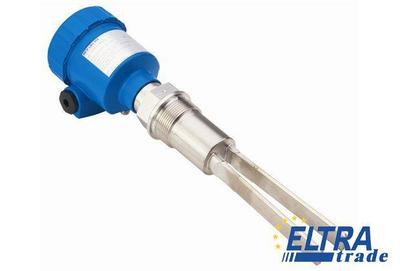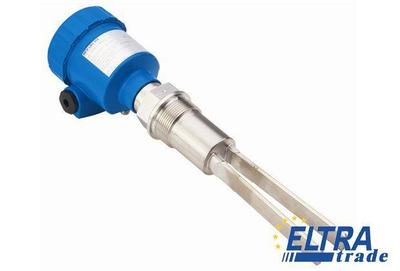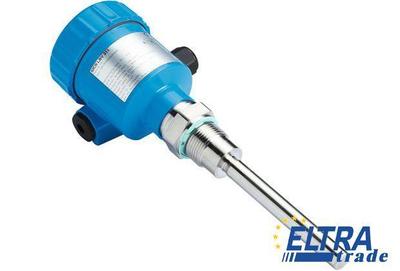Sick Level sensors
- Level monitoring in hygienic applications
- Manually cutable monoprobe up to 4,000 mm long with Ra lessthan 0.8 µm
- Process temperature up to 180 °C, process pressure up to 16 bar
- Level monitoring in hygienic applications
- Manually cutable monoprobe up to 4,000 mm long with Ra lessthan 0.8 µm
- Process temperature up to 180 °C, process pressure up to 16 bar
- Level monitoring in hygienic applications
- Manually cutable monoprobe up to 4,000 mm long with Ra lessthan 0.8 µm
- Process temperature up to 180 °C, process pressure up to 16 bar
- Level monitoring in hygienic applications
- Manually cutable monoprobe up to 4,000 mm long with Ra lessthan 0.8 µm
- Process temperature up to 180 °C, process pressure up to 16 bar
- Level monitoring in hygienic applications
- Manually cutable monoprobe up to 4,000 mm long with Ra lessthan 0.8 µm
- Process temperature up to 180 °C, process pressure up to 16 bar
- Level monitoring in hygienic applications
- Manually cutable monoprobe up to 4,000 mm long with Ra lessthan 0.8 µm
- Process temperature up to 180 °C, process pressure up to 16 bar
- Level monitoring in hygienic applications
- Manually cutable monoprobe up to 4,000 mm long with Ra lessthan 0.8 µm
- Process temperature up to 180 °C, process pressure up to 16 bar
- Level monitoring in hygienic applications
- Manually cutable monoprobe up to 4,000 mm long with Ra lessthan 0.8 µm
- Process temperature up to 180 °C, process pressure up to 16 bar
- Level monitoring in hygienic applications
- Manually cutable monoprobe up to 4,000 mm long with Ra lessthan 0.8 µm
- Process temperature up to 180 °C, process pressure up to 16 bar
- Level monitoring in hygienic applications
- Manually cutable monoprobe up to 4,000 mm long with Ra lessthan 0.8 µm
- Process temperature up to 180 °C, process pressure up to 16 bar
- Non-contact level measurement up to 3.4 m operating distance / 8.0 m limit scanning distance
- Pressure resistant up to 6 bar (87 psi)
- Transducer protected by PVDF cover for increased resistance
- Non-contact level measurement up to 3.4 m operating distance / 8.0 m limit scanning distance
- Pressure resistant up to 6 bar (87 psi)
- Transducer protected by PVDF cover for increased resistance
FTS-H100F04A FLOW THERMAL SWITCH art. 1091147
FUM-H025F1GE50000 FLOW ULTRASONIC METER art. 1082028
- Rugged device design
- Several housing materials and electrical outputs available
- Immune to deposit formation
- Rugged device design
- Several housing materials and electrical outputs available
- Immune to deposit formation
- Rugged device design
- Several housing materials and electrical outputs available
- Immune to deposit formation
- Compact, rugged device design
- Several housing materials and electrical outputs available
- Monoprobe design prevents bulk materials from sticking and jamming
Sick offers a range of level-sensing solutions for various industrial applications. These level transmitters use a variety of technologies and principles to accurately measure the level of liquids or solids in tanks, bins, and other containers. Next, we will look at Sick level sensors in detail.
Types of Sick Level Sensors
SICK offers a wide range of level sensors for various industrial applications. These level transmitters use different technologies and principles to accurately measure the level of liquids or solids.
- Capacitive level sensors. SICK offers capacitive level sensors that use the change in capacitance to detect the level of liquids or bulk solids. For example, a Sick level sensor LFP is capable of measuring the level of both conductive and non-conductive liquids, as well as solids.
- Ultrasonic level sensors. Such devices use ultrasonic waves to measure the level of liquids or bulk materials. Sick ultrasonic level sensors emit ultrasonic pulses and measure the time it takes for sound waves to reflect off the surface of a liquid or material. Ultrasonic level sensors are suitable for non-contact level measurement.
- Waveguide radar level sensors. Such devices use microwave pulses to measure the level of liquids, solids, or interfaces. Radar signals are guided along a probe or waveguide inserted into a tank or vessel, allowing accurate level measurement even under difficult conditions such as foaming, turbulence, or high temperatures.
- Hydrostatic pressure level sensors. Such hydrostatic pressure level sensors are based on the principle of hydrostatic pressure created by a liquid column above the sensor. These sensors measure the pressure at the bottom of the container to determine the level of the liquid.
- Conductive level sensors. These level sensors are designed for applications requiring the detection of conductive liquids. These sensors use the conductivity of the liquid to determine the level. They are commonly used in applications such as high or low-level detection, overfill protection, and pump or valve control.
- Optical level sensors. These sensors use infrared or visible light to detect the presence or absence of liquid or objects. The Sick water level sensor can be used to measure levels as well as detect leaks, foam, or other conditions in tanks or pipelines.
Working Principle of Sick Level Sensors
Sick level sensors use different principles of operation depending on the type of sensor technology used.
- Capacitive level sensors work based on changes in capacitance. They consist of a sensitive electrode and a reference electrode. When the sensor is in contact with a liquid or material, the capacitance between the electrodes changes. This capacitance change is detected by a sensor and the liquid or material level is determined based on the detected capacitance.
- Ultrasonic level sensors emit ultrasonic waves and measure the time it takes for the sound waves to reflect off the surface of a liquid or material. The sensor contains a transducer that emits ultrasonic pulses and receives echo signals. By measuring the travel time of the sound waves, the sensor calculates the distance to the surface of the liquid or material, which makes it possible to measure the level.
- Guided wave radar level transmitters use microwave pulses to measure the level of liquids, solids, or interfaces. The sensor emits microwave signals along a probe or waveguide inserted into a tank or vessel. These signals travel along the probe and are reflected back when they encounter a change in dielectric constant, for example, at the surface of a liquid or material. The transit time of the reflected signals is measured, which allows the sensor to accurately determine the level.
- Hydrostatic pressure level sensors are based on the principle of hydrostatic pressure generated by a liquid column above the sensor. These sensors have a pressure-sensitive element such as a diaphragm or a piezoresistive sensor. The pressure exerted by the liquid is converted into an electrical signal, which is then used to determine the level of the liquid.
- Conductive level sensors operate on the basis of the conductivity of the liquid being measured. These sensors consist of probes or electrodes immersed in a liquid. When the liquid level reaches a certain height and comes into contact with the electrodes, a conductive path is installed. This path is fixed by a sensor indicating the liquid level.
- Optical level sensors use light-based detection to detect the presence or absence of liquid or objects. They emit beams of infrared or visible light and measure the reflection or absorption of light. The presence of a liquid or object interrupts the light beam, allowing the sensor to detect the level or presence of the material.
Applications of Sick Level Sensors
Sick level sensors are used in various industries and sectors where accurate and reliable level measurement is required.
- Liquid storage tanks.
- Chemical processing.
- Food and beverage industry.
- Water and wastewater management.
- Pharmaceutics and biotechnology.
- Loading and unloading operations and logistics.
- Petrochemistry and oil refining.
- Mining and aggregates.
Considerations for Selecting Sick Level Sensors
When selecting for example a Sick vibrating level sensor for your particular application, it is important to consider several factors to ensure that the selected sensor meets your requirements.
- Measurement range.
- Accuracy and resolution.
- detection technology.
- Environmental conditions.
- material properties.
- installation requirements.
- Output type and compatibility.
- Maintenance and reliability.
- Cost and budget.
Consider the availability of technical support, documentation, and resources provided by Sick. Make sure you have access to the necessary documentation, programming guides, and support channels to help with sensor integration, programming, and troubleshooting. And if you want to study this equipment in more detail, you can read the Sick level sensor manual.
